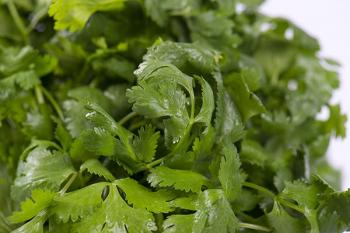
AgCenter: It's easy to grow parsley during wintertime
Fall is an outstanding time to plant many of the hardy culinary herbs, and one of the most popular is parsley.
Parsley (Petroselinum crispum) is a member of the Umbelliferae family along with dill, cilantro, fennel and celery, which can also be planted now. Especially rich in chlorophyll, parsley is an excellent breath freshener. That’s why it was originally served with a plate of food. It was actually meant to be eaten after the meal to freshen the breath, rather than just sit on the plate and look nice.
Both the common curly and Italian flat-leaf parsleys are excellent for cooking, although the flat-leaved Italian or plain types are generally considered to have a stronger flavor. The curly types are popular for their ornamental as well as culinary uses.
Typically, parsley plants spread 12 inches or more across from a central crown and grow about 8 to 10 inches tall. When they bloom, the flower stalk can reach 2 to 3 feet tall.
In Louisiana, parsley is best grown as a cool-season annual. Seeds can be planted now through early March either directly in garden beds or in pots for transplants. Plants purchased at area nurseries can be planted now through early April. Best harvests generally come from plants or seeds planted in fall.
Grow parsley in a bed where the soil has been enriched with generous amounts of compost, aged manure or other organic matter and a moderate application of fertilizer. Choose a spot that gets full sun, although parsley will produce fairly well with as little as four hours of direct sun. A location that gets some shade in the afternoon will allow the parsley to last longer into the summer.
Growing parsley from seeds can require patience because they are often slow to germinate. You can speed germination by soaking the seeds overnight or freeze the seeds for a few days before planting. To directly sow the seeds into the garden, trace a shallow indentation in the soil of a well-prepared bed with a stick or the handle of a garden tool. Sow the seeds by dribbling them through your thumb and forefinger into the indented row and cover them with about one-quarter inch of soil.
The seeds should come up in 10 to 14 days. But they can take as long as three weeks, especially if they were not pre-soaked or frozen. During this time it is critical to keep the seed bed moist with regular — even daily — watering. When the seedlings have grown several leaves, thin them to a spacing of 10 to 12 inches.
Plant young transplants you grew yourself or purchased from a nursery spaced 10 to 12 inches apart into a well-prepared bed. Do not plant them any deeper than they were growing in the container, or the crown may rot.
When you purchase plants at a nursery, a number of seedlings are often in one pot. Ideally, pinch off all but the largest, strongest plant in the container and plant it. Or you may separate the seedlings into individual pots and grow them for a week or two to recover from transplant shock and to achieve more size. Then plant them into the garden.
Parsley grows very well in containers, alone or combined with other herbs or flowers. Choose at least a 1-gallon container for one plant, and use larger containers for combination plantings. Make sure the containers you use have drainage holes.
Fill the container with your favorite potting soil or soilless mix within 1 or 2 inches of its top. Add some slow release fertilizer, and you’re ready to plant.
Begin harvesting parsley when the plants have grown about 6 inches across. Harvest the larger leaves at the outside of the plant leaving the new interior shoots to mature. Don’t take more than one-third to one-half of the foliage at one time.
Store freshly picked leaves in plastic bags in the refrigerator for up to two weeks. Freeze chopped leaves in plastic freezer bags for up to six months. You may dry parsley as well, although it doesn’t compare to the flavor of fresh or frozen parsley.
Flowering often occurs in May or early June, especially on parsley planted in the fall. This signals the end of production. But leave blooming plants in the garden because the small flowers are attractive to tiny parasitic wasps that help control insects. Plants that do not bloom may survive the summer and produce for another season.
If you see a brightly striped caterpillar feeding on your parsley, be aware that it is the larva of the black swallowtail butterfly. To preserve both it and your parsley, move it to another plant in the same family, such as fennel, carrots or dill, that you can spare. Or call a friend with a butterfly garden and give the caterpillars to them.
- Log in to post comments
